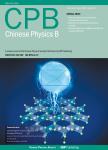Dynamic aggregation evolution of competitive societies of cooperative and noncooperative agents
Dynamic aggregation evolution of competitive societies of cooperative and noncooperative agents作者机构:Department of PhysicsZhejiang University Department of PhysicsWenzhou University Department of PhysicsHangzhou Normal University
出 版 物:《Chinese Physics B》 (中国物理B(英文版))
年 卷 期:2013年第22卷第5期
页 面:572-586页
核心收录:
学科分类:0711[理学-系统科学] 07[理学] 071101[理学-系统理论]
主 题:dynamic evolution in competitive societies cooperative and noncooperative agents win-win andlose-lose reaction win-lose reaction
摘 要:We propose an evolution model of cooperative agent and noncooperative agent aggregates to investigate the dynamic evolution behaviors of the system and the effects of the competing microscopic reactions on the dynamic evolution. In this model, each cooperative agent and noncooperative agent are endowed with integer values of cooperative spirits and nonco- operative spirits, respectively. The cooperative spirits of a cooperative agent aggregate and the noncooperative spirits of a noncooperative agent aggregate change via four competing microscopic reaction schemes: the win-win reaction between two cooperative agents, the lose-lose reaction between two noncooperative agents, the win-lose reaction between a coop- erative agent and a noncooperative agent (equivalent to the migration of spirits from cooperative agents to noncooperative agents), and the cooperative agent catalyzed decline of noncooperative spirits. Based on the generalized Smoluchowski's rate equation approach, we investigate the dynamic evolution behaviors such as the total cooperative spirits of all coop- erative agents and the total noncooperative spirits of all noncooperative agents. The effects of the three main groups of competition on the dynamic evolution are revealed. These include: (i) the competition between the lose-lose reaction and the win-lose reaction, which gives rise to respectively the decrease and increase in the noncooperative agent spirits; (ii) the competition between the win-win reaction and the win-lose reaction, which gives rise to respectively the increase and decrease in the cooperative agent spirits; (iii) the competition between the win-lose reaction and the catalyzed-decline reaction, which gives rise to respectively the increase and decrease in the noncooperative agent spirits.



